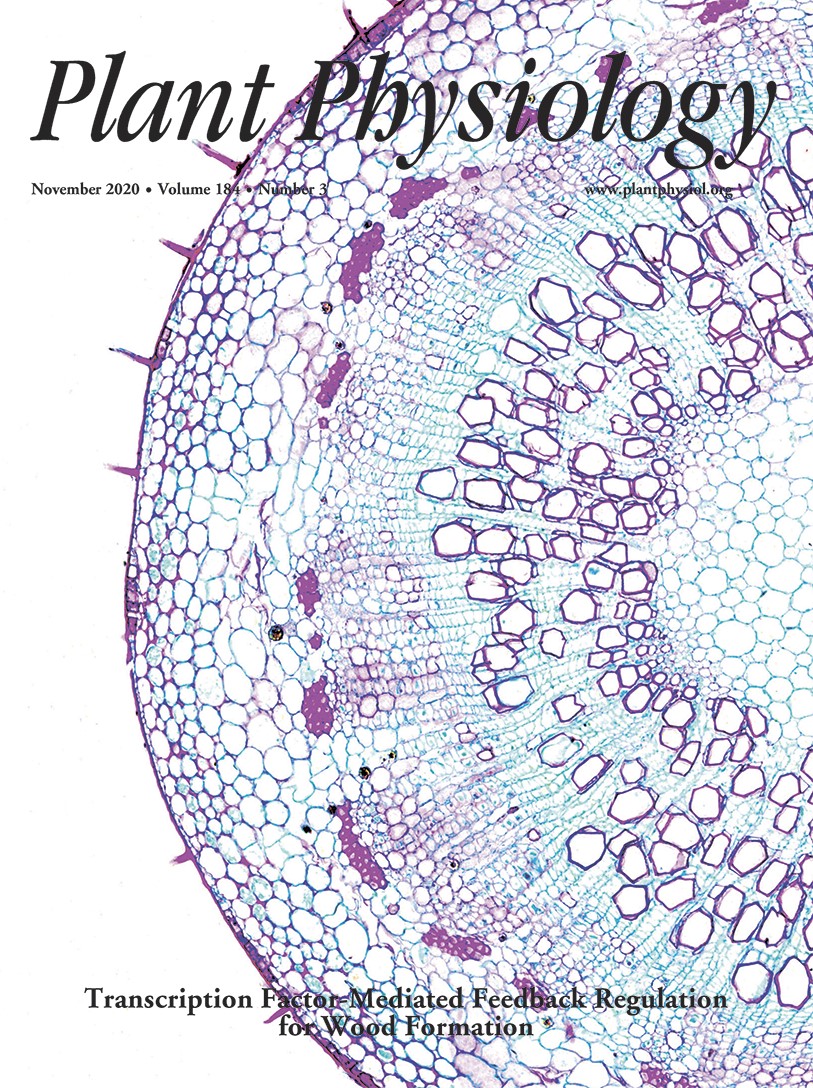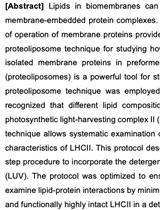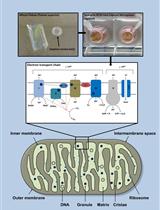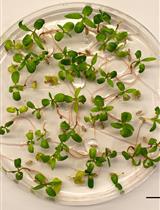- EN - English
- CN - 中文
Dark Respiration Measurement from Arabidopsis Shoots
拟南芥芽的暗呼吸测量
(*contributed equally to this work) 发布: 2021年10月05日第11卷第19期 DOI: 10.21769/BioProtoc.4181 浏览次数: 4062
评审: Ignacio LescanoSalim GasmiAnonymous reviewer(s)
Abstract
Dark respiration refers to experimental measures of leaf respiration in the absence of light, done to distinguish it from the photorespiration that occurs during photosynthesis. Dark aerobic respiration reactions occur solely in the mitochondria and convert glucose molecules from cytoplasmatic glycolysis and oxygen into carbon dioxide and water, with the generation of ATP molecules. Previous methods typically use oxygen sensors to measure oxygen depletion or complicated and expensive photosynthesis instruments to measure CO2 accumulation. Here, we provide a detailed, step-by-step approach to measure dark respiration in plants by recording CO2 fluxes of Arabidopsis shoot and root tissues. Briefly, plants are dark acclimated for 1 hour, leaves and roots are excised and placed separately in airtight chambers, and CO2 accumulation is measured over time with standard infrared gas analyzers. The time-series data is processed with R scripts to produce dark respiration rates, which can be standardized by fresh or dry tissue mass. The current method requires inexpensive infrared gas analyzers, off-the-shelf parts for chambers, and publicly available data analysis scripts.
Keywords: NFS1 (NFS1)Background
Plants produce energy in the form of ATP from glucose oxidation through mitochondrial respiration (Glucose + oxygen = carbon dioxide + water). In order to differentiate from photorespiration inherent to photosynthesis, dark respiration measurements are made in the absence of light (Graham, 1980). Mitochondria are essential organelles involved in energy production, amino acid biosynthesis, iron-sulfur (Fe-S) cluster cofactor biosynthesis, and other metabolic pathways that affect growth and stress responses (Lill, 2009). We identified two mitochondria-localized Fe-S cluster proteins, NITROGEN FIXATION S-LIKE1 (NFS1) and its interactor FRATAXIN (FH), as novel players in plant defense responses (Fonseca et al., 2020). In the current manuscript, we describe the methods used in this previous research to test a possible effect of the nfs1 and fh mutants, and overexpression lines, on mitochondrial respiration using measurements of dark respiration of the entire shoot and root. This simple protocol can be performed using plants grown entirely in controlled conditions in growth chambers. It involves the flux measurement of the dark respiration by-product CO2 from tissues in small airtight chambers, using an LI-850 CO2/H2O gas analyzer (LICOR) in a dark room with a supplemental photosynthetically inactive yellow LED light. The CO2 flux for each plant is measured during a 2 min 30 s interval using the software LI-8x0 v1.02 (LICOR). Specific shoot and root respiration rates (nmol CO2 gfw-1 s-1) are calculated from the raw CO2 flux data using R (v.3.6.0; https://www.r-project.org/), where linear regression is used to calculate the CO2 flux rate with the dead band set at 60 s, and then divided by total shoot fresh weight.
Prior descriptions of plant respiration measurements often included complex apparatus consisting of independent equipment to move air and measure CO2 with an infrared gas analyzer, and using a mass flow controller (Martin et al., 1981; Condori-Apfata et al., 2019). More recently, photosynthesis instruments that are an order of magnitude more expensive than the gas analyzer used here have been used with custom modifications (Tomaz et al., 2010). As an alternative to measuring the production of CO2, other protocols make use of oxygen sensors to instead measure O2 depletion (Li et al., 2013). In comparison, we have accomplished the same goals using less expensive and relatively less complex off-the-shelf parts that can be assembled and used by any plant laboratory. In addition, we have made the R scripts for data analysis publicly available to ensure the reproducibility of the method.
This protocol will be useful for researchers who need to measure dark respiration as a proxy for changes in mitochondrial abundance and/or activity, as we have done inFonseca et al. (2020). However, respiration has also been hypothesized to be a potential target for increasing metabolic efficiency, as has been done for photosynthesis (Amthor et al., 2019). Simulation results highlight the opportunity to target respiration as an unappreciated avenue for crop improvement, where both leaf and root respiration need to be considered for the whole-plant carbon allocation analysis (Holland et al., 2020). Indeed, a similar protocol as outlined here was used to measure in-light root respiration of 1,104 wheat seedlings to conduct a genome wide association study (Guo et al., 2021). This work found substantial heritable variation for specific root respiration as well as candidate genes responsible for that variation. Bunce (2021) showed that CO2 depletion methods for respiration closely match the total mass reduction estimates of respiration, validating the approach. Therefore, this reproducible protocol can have an impact on multiple fields of plant biology, ranging from understanding the molecular basis of respiration to study respiration as a breeding target.
Materials and Reagents
Falcon 6-well clear flat bottom plate (Corning, catalog number: 353224)
Petri plates (15 × 100 mm) (Carolina, catalog number: 741251)
7.5 cm3 internal volume opaque PVC pipe with threaded ends (United States Plastic Corp, 1/4" × 6" Schedule 80 CPVC Nipple, catalog number: 30207)
Threaded cap with 1/8” hole drilled in the center (United States Plastic Corp, 1/4" FNPT Nylon Threaded Cap, catalog number: 62164)
Quick-connect male and female fittings (LI-COR, Inc., catalog numbers: 300-07124 and 300-07125)
Balston filter (LI-COR, Inc., catalog number: 300-01961)
Rubber seals (LI-COR, Inc., catalog number: 167-07256)
Parafilm M laboratory film (Amazon, catalog number: PM999)
Bev-A-Line 1/4'' OD 15 m tubing (LI-COR, Inc., catalog number: 8150-250)
Quick connect, female bulkhead fitting (LI-COR, Inc., catalog number: 300-07126)
Quick connect, plug bulkhead (LI-COR, Inc., catalog number: 300-07127)
Quick connect straight union (LI-COR, Inc., catalog number: 300-03123)
Aluminum foil (Amazon, any brand)
Drierite (LI-COR, Inc., catalog number: 622-04299)
Arabidopsis seeds (ABRC., https://abrc.osu.edu)
Murashige & Skoog (MS) media with vitamins (Grainger, catalog number: M70800-50.0)
Sucrose (VWR, catalog number: BDH9308-500G)
Potassium hydroxide (KOH) (VWR, catalog number: BDH9262-500G)
Phytagel (Sigma-Aldricht, catalog number: 71010521)
Ethanol absolute 100% (VWR, catalog number: 71006012)
Triton X-100 (Fischer scientific, catalog number: AC327372500)
Sodium Hypochlorite 8% (Clorox Disinfecting Bleach, catalog number: CLO32260)
1/2 MS liquid media pH 5.7 (see Recipes)
Bleach solution (see Recipes)
Equipment
Orbital Shaker (Thermolyne Bigger Bill, catalog number: M49235)
LI-850 CO2/H2O Analyzer (LI-COR, Inc. catalog number:)
Computer with Windows 10 and USB ports to run LI-COR software
Bead bath (Lab Armor, catalog number: 74300-714)
Sterile cabinet (Thermo Scientific, catalog number: 13-261-221)
Autoclave (Steris Amsco Century, catalog number: SG-120)
Metallic beads (Lab Armor, catalog number: 42370-004)
Timer/stopwatch (Big Digit Timer, catalog number: ML5004)
Compressed air duster (Blow Off Duster, catalog number: 152-112-226)
Laboratory balance scale (Mettler Toledo, catalog number: ME103TE)
Curved tip forceps for plant handling (Epredia, catalog number: 1631)
Scissors for plant handling (Amazon, any brand)
Software
LI-8x0 v1.02 (LI-COR, Inc., https://www.licor.com/env/support/LI-850/software.html)
R studio (R Core Team, https://www.r-project.org/)
Procedure
文章信息
版权信息
© 2021 The Authors; exclusive licensee Bio-protocol LLC.
如何引用
Readers should cite both the Bio-protocol article and the original research article where this protocol was used:
- Fonseca, J. P., Griffiths, M., York, L. M. and Mysore, K. S. (2021). Dark Respiration Measurement from Arabidopsis Shoots. Bio-protocol 11(19): e4181. DOI: 10.21769/BioProtoc.4181.
- Fonseca, J. P., Lee, H. K. Boschiero, C., Griffiths, M., Lee, S., Zhao, P. X., York, L and Mysore, K. S. (2020). Iron-sulfur cluster protein NITROGEN FIXATION S-LIKE 1 and its interactor FRATAXIN function in plant immunity. Plant Physiol 184(3): 1532-1548.
分类
植物科学 > 植物生理学 > 新陈代谢
环境生物学 > 植物 > 植物-微生物互作
您对这篇实验方法有问题吗?
在此处发布您的问题,我们将邀请本文作者来回答。同时,我们会将您的问题发布到Bio-protocol Exchange,以便寻求社区成员的帮助。
Share
Bluesky
X
Copy link













